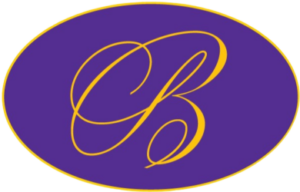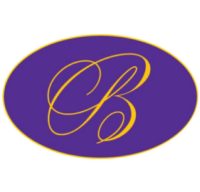A History of Excellence on Ice
In its 78 year history, the Broadmoor Skating Club has had eight members medal at the Olympics. Three of them won gold. We are the home club of over 200 national medalists. The flags hanging in the Olympic rink of the Ice Hall reveal just the tip of an enormous iceberg of accomplishments made by hundreds of skaters who have learned skating artistry, good sportsmanship, and often, a professional career, as BSC members.
During the mid-1930’s America’s love affair with the incredible beauty of skating took off. Hollywood glamorized it in Sonja Henie films, while traveling ice shows packed in eager crowds at major arenas throughout the country. Nestled at the foot of the picturesque Rocky Mountains, the exclusive Broadmoor Hotel was a natural winter sports mecca. In 1938, its owners, Spencer Penrose and Charles L. Tutt Jr., devised a plan to convert a riding academy on the hotel grounds into the Broadmoor Ice Palace. Conversion took a mere 24 days and $200,000. One hundred tons of ice were frozen to make up the 185′ by 85′ surface. Steam pipes were installed around the edges of the rink to keep spectators warm. Tables were placed there, too, where waiters, wearing skates, delivered drinks and snacks.
The Broadmoor Skating Club was incorporated at almost the same time, initially calling itself the Pikes Peak Figure Skating Club. To achieve membership status, skaters were required to perform two fundamental edges and several specific turns. That very first year, the club presented ice shows for conventions held at the Broadmoor, staged the first of its annual summer ice revues, and celebrated the holiday season with a skating extravaganza. In the summer revue, the ice surface was painted to look like a Navajo rug. Tepees were set up at one end of the rink, and real bonfires were ignited.
Over time, presentations such as this became known as the most “professional” amateur ice shows in the world. Spencer Penrose died in l939. He and wife Julie had no children, so Charles Tutt, Jr. and his sons Russell and Thayer took over managing the Broadmoor Hotel. Thayer’s domain was international amateur sports–figure skating, hockey and golf. He was personally responsible for recruiting world class coaches to lure world class figure skaters here for training.
In 1939 the Pikes Peak Figure Skating Club became a member of United States Figure Skating . By 1940 the club could had its first Pacific Coast champions: Patty Vaeth and Jack Might for Junior Pairs, and Jack Might for Novice Men’s. A year later, thanks to Thayer Tutt’s support, Pacific Coast Championships were held at the Broadmoor Ice Palace; 51 skaters traveled to Colorado Springs to compete along with 12 of our own club members, each hoping to qualify for Nationals in Boston. Jack Might went on to win the U.S. Novice Men’s Silver Medal, he and Patty Vaeth placed second in pairs at the U.S. National Championships, and third in the North American Championships.
In the summer of 1945, Thayer Tutt brought world-class coach Edi Scholdan to the Broadmoor. Among many national and international skaters who arrived to train under Scholdan was Virginia “Ginny” King. Not only did her skating improve here, but, in time, Ginny fell in love with and married Jack Might. This fortunate event kept her in Colorado Springs permanently. Ginny Might had a degree in design and for the next 46 years she designed and made sample costumes for the club’s elaborate shows.
Most of these years were before the advent of Lycra and other stretch fabrics. Ginny devised a way to put a gusset (an egg-shaped curved piece of fabric) under the arm, which allowed the skater to lift his or her arms while doing jumps and spins. The hotel paid for the fabric, while Ginny, Helen Smith, and Carol Kineriem sewed the garments. Ginny was also able to negotiate getting costumes no longer needed by the Ice Follies to be donated to the club’s ever expanding closet. She persuaded formal wear companies to part with a variety of tuxes at bargain basement prices. Whatever the show theme, Ginny could pull it all together. In 1946 Patty Sonnekson became the first club member to receive the USFS’s Gold Test Medal.
In 1948, the club changed its name to the Broadmoor Skating Club linking a five-star hotel symbolically to a 5-star skating club. At this time also, a young girl from Germany named Ina Bauer was training at the Broadmoor . . . honing her skill of gliding across the ice with one leg bent, the other straight. Viennese-born Edi Scholdan was the draw who brought Bauer here. Known to audiences as the best juggler on blades, he was internationally recognized as a fine technical coach and innovative show producer. Scholdan was the first person to combine choreographed dancing with skating numbers. He brought the Colorado Springs Symphony to the arena and arranged as a special show in concert with the skaters. He was the coach who lead two brothers, Hayes Alan and David Jenkins to their Olympic Gold. Hayes winning at Cortina in 1956, while David took the bronze. David won in Squaw Valley in 1960.
And, it was Edi Scholdan who was killed in a plane crash near Brussels, Belgium while traveling to the 1961 World Figure Skating Championships. On the plane with him was the entire 18-member U.S. Figure Skating Team. Many of its members had grown up skating at the Broadmoor. Also on board, were coaches, team managers, officials, friends, and relatives–including Scholdan’s son Jimmy. Everyone perished.
The World Figure Skating Championships in Prague were canceled that year, in memory of the American Team. Many team members had been bright prospects for winning not only at Worlds, but at the Olympics as well. Out of this nation’s grief came the USFSA Memorial Fund, in remembrance of those who died. The fund provides financial assistance to qualifying young skaters.
The Broadmoor Skating Club created its own memorial to those who perished. A skate-shaped granite bench was placed outside the front entrance to the rink, with the names of BSC skaters who died inscribed upon it. The rink changed, too. It had hosted World’s in 1957 and 1959. It lost more than any other facility with the death of its World Team members in 1961. The Ice Palace was renamed: The World Arena.
After such an incalculable setback, Thayer Tutt searched for the best head coach replacement he could find. His choice–the young Carlo Fassi. Fassi and his wife, Christa, rekindled the winning spirit that had been created by Scholdan. A young skater named Peggy Flemming arrived to train with the Fassi’s. She won Olympic Gold in 1968 at Grenoble. Another Fassi protege, Tina Noyes, took 4th.
In 1968, Eddie Shipstad, son of the founder of the Ice Follies, became manager of the World Arena. In 1969 England’s Ron Baker arrived as Head Coach, along with his star pupil, Tim Wood. Wood took 1st at Nationals the next year. During the next decade, Baker and Shipstad, along with BSC President Jack Might, produced meticulously choreographed, theatrical shows featuring as many as 140 skaters at a time. The tradition of staging Christmas “Pops On Ice” shows began in 1977 with guest conductor Arthur Fiedler and the Colorado Springs Symphony. On the coaching staff with Baker were Pieter Kollen and Jack Raffloer. They helped perfect the skills of Scott Cramer, a local skater, who won 3rd at Nationals in 1976, 2nd at Nationals in both ’77 and ’79, and who became World Professional Champion in 1980. At this time, too, Thayer Tutt was instrumental in winning the Olympic Training Center for Colorado Springs. Ron Baker retired in 1979, and shortly, a beloved and admired Carlo Fassi returned as Director of Skating.
In the ’81-’82 season, 43 international skaters arrived at the Broadmoor to train at the 6200′ elevation with the famous Fassi. With Carlo’s guidance, Caryn Kadavy took 3rd at Worlds in 1987 and Jill Trenary won 1st at Nationals. In ’88, Todd Eldredge captured 1st at World Juniors.

